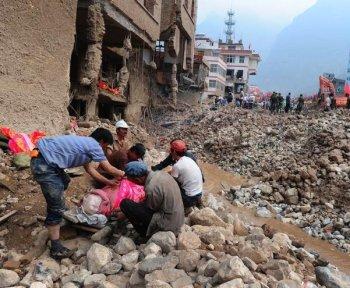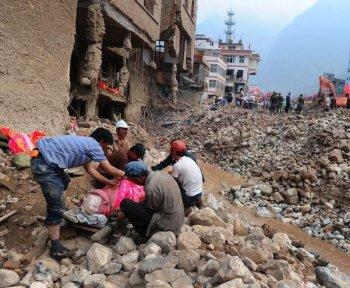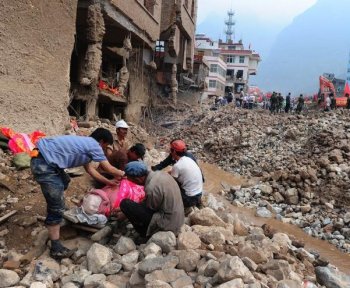Mudslide in Northwest China Buries Village, Death Toll Underreported
The death toll from a mudslide in Zhouqu County, Gansu Province, was underreported by state media, according to locals.

Surviving residents cover the body of a deceased relative resting on a makeshift stretcher amid the rubble of landslide devastation as rescue efforts continue in Zhouqu on August 11, in northwest China's Gansu province. Frederic J. Brown/Getty Images
|Updated:




